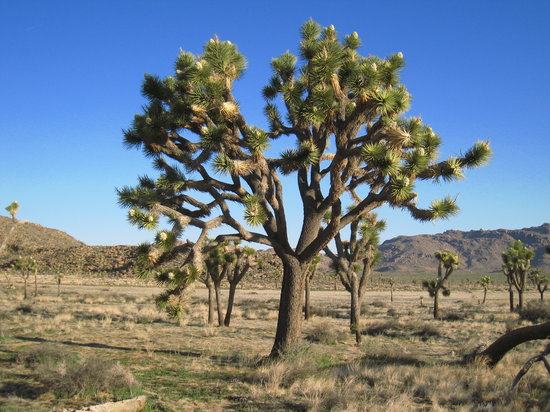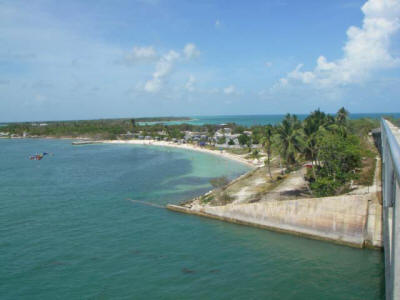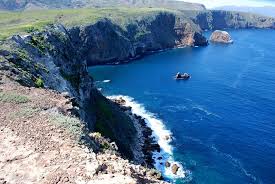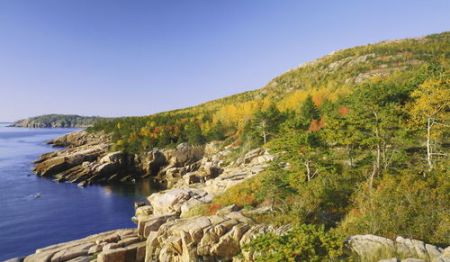Eight hundred thousand acres filled with endemic trees and ancient, wild rock formations. The best part? No need to be an expert climber. Jumbo rock is a blast to explore. There is also horseback riding, birdwatching, and mountain biking.
Florida’s John Pennekamp Coral Reef Park www.floridastateparks.org/pennekamp
Located in the Florida Keys, this original undersea park features 178 nautical miles of coral reefs, seagrass beds and mangrove swamps. A perfect place to scuba, snorkel or take a glass bottom boat tour.
Idaho’s Warm River Campground www.recreation.gov/warmeriver
Surrounded by willow and pine trees, a fishing enthusiast’s heaven. While Dad is busy catching brook and rainbow trout, the kids can go sailing or tubing. There’s a river regatta in July. Natural springs and waterfalls dot the scenery and in winter the frozen falls are spectacular.
Montana’s Glacier National Park www.nps.gov/glac
This park is named for its glacier-carved terrain and remnant glaciers from the ice ages 10,000 years ago. Bike, boat or horseback ride along spectacular vistas. There are also a wide range of weather conditions at the park thanks to the mountains, lakes and the Canadian cold fronts.
California’s Channel Islands National Park in Santa Cruz Island www.nps.gov/chisThe Channel Islands National Park at Santa Cruz Island in California boasts one of the largest and deepest sea caves in the world. Called the Painted Cave, and named after its colorful rocks and algae, it is nearly a quarter-mile long and 100 feet wide. You’ll also get to see the island scrub jay and eight plant species found only on Santa Cruz.
Maryland’s Assateague Island National Seashore www.nps.gov/asis
The Assateague Island National Seashore has over 48,000 acres in Maryland and Virginia. It’s a great place to camp and kayak, swim and surf , but it is best known for its wild horses. There are over 300 wild ponies roaming free. Don’t forget your waterproof cameras.
Colorado’s Rocky Mountain National Park www.nps.gov/romo
There are over 350 miles of hiking trails and there is something for all ages and skill levels. From gentle lakeside walks to high mountain summit ascents—and even vertical rock climbs, this park will give you a workout. There’s also plenty of wildlife to see, including elk and the Rockies' big horn sheep.
There are over 350 miles of hiking trails and there is something for all ages and skill levels. From gentle lakeside walks to high mountain summit ascents—and even vertical rock climbs, this park will give you a workout. There’s also plenty of wildlife to see, including elk and the Rockies' big horn sheep.
For more information on these and other campsites, check out the links below.
National Park Service
Public Lands Information Center
US National Parks Travel Guide
RANGER WRAP-UP
Haven's Camping Checklist, Don't Leave Home Without It
1) ON YOUR MARK: Make sure to have some basics such as a first aid kit, Tylenol, sunscreen, insect repellent, Hydrocortisone cream, water bottles and water purifying tablets, sunglasses or sun hats.
2) KEEP IT LIGHT: Try to bring clothes that are quick drying and multipurpose, such as light t-shirts and cargo pants. Make sure you have comfortable shoes.
3) ACCOMMODATIONS: If you are using a tent, make sure it is in working order before your trip. Make sure you take the right kind of sleeping bag for your trip: a lightweight one for back-country or rugged trips, a heavily insulated one if the temperatures drop. If you’re in a campground, a Mayan hammock is light on weight, yet heavy on the relaxation quotient. Taking a bike? Don’t forget a sturdy lock.
4) FEED: Bring minimal cooking equipment, such as a multipurpose pot (for boiling/ sterilizing water and utensils to cooking a can of chili), lightweight plates and utensils. Take along some portable snacks, such as power and granola bars. And don’t forget the tummy-first aid kit: all the ingredients for delicious s’mores!
National Park Service
Public Lands Information Center
US National Parks Travel Guide
RANGER WRAP-UP
Haven's Camping Checklist, Don't Leave Home Without It
1) ON YOUR MARK: Make sure to have some basics such as a first aid kit, Tylenol, sunscreen, insect repellent, Hydrocortisone cream, water bottles and water purifying tablets, sunglasses or sun hats.
2) KEEP IT LIGHT: Try to bring clothes that are quick drying and multipurpose, such as light t-shirts and cargo pants. Make sure you have comfortable shoes.
3) ACCOMMODATIONS: If you are using a tent, make sure it is in working order before your trip. Make sure you take the right kind of sleeping bag for your trip: a lightweight one for back-country or rugged trips, a heavily insulated one if the temperatures drop. If you’re in a campground, a Mayan hammock is light on weight, yet heavy on the relaxation quotient. Taking a bike? Don’t forget a sturdy lock.
4) FEED: Bring minimal cooking equipment, such as a multipurpose pot (for boiling/ sterilizing water and utensils to cooking a can of chili), lightweight plates and utensils. Take along some portable snacks, such as power and granola bars. And don’t forget the tummy-first aid kit: all the ingredients for delicious s’mores!
















No comments:
Post a Comment